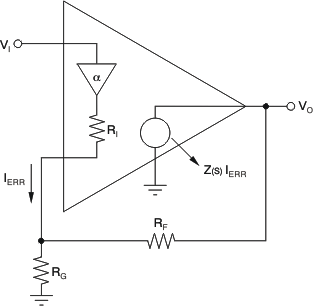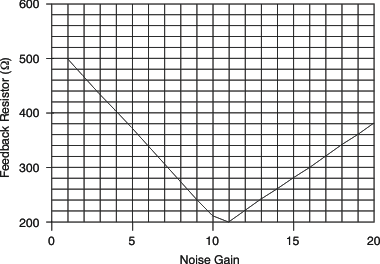SBOS382H may 2008 – june 2023 OPA2673
PRODUCTION DATA
- 1
- 1 Features
- 2 Applications
- 3 Description
- 4 Revision History
- 5 Device Family Comparison Table
- 6 Pin Configuration and Functions
-
7 Specifications
- 7.1 Absolute Maximum Ratings
- 7.2 ESD Ratings
- 7.3 Recommended Operating Conditions
- 7.4 Thermal Information
- 7.5 Electrical Characteristics: Full Bias and Offline Mode VS = ±6 V
- 7.6 Electrical Characteristics: 75% Bias Mode VS = ±6 V
- 7.7 Electrical Characteristics: 50% Bias Mode VS = ±6 V
- 7.8 Typical Characteristics: VS = ±6 V, Full Bias
- 7.9 Typical Characteristics: VS = ±6 V Differential, Full Bias
- 7.10 Typical Characteristics: VS = ±6 V, 75% Bias
- 7.11 Typical Characteristics: VS = ±6 V, 50% Bias
- 8 Detailed Description
- 9 Application and Implementation
- 10Device and Documentation Support
- 11Mechanical, Packaging, and Orderable Information
Package Options
Mechanical Data (Package|Pins)
- RGV|16
Thermal pad, mechanical data (Package|Pins)
- RGV|16
Orderable Information
8.3.1.1 Setting Resistor Values to Optimize Bandwidth
A current-feedback op amp such as the OPA2673 can hold an almost constant bandwidth over signal gain settings with the proper adjustment of the external resistor values, which are shown in the Typical Characteristics; the small-signal bandwidth decreases only slightly with increasing gain. These characteristic curves also show that the feedback resistor is changed for each gain setting. The absolute values of RF on the inverting side of the circuit for a current-feedback op-amp can be treated as a frequency response compensation element, whereas the ratios of RF and RG set the signal gain.
Figure 8-2 shows the small-signal frequency response analysis circuit for the OPA2673.
 Figure 8-2 Current-Feedback Transfer Function Analysis Circuit
Figure 8-2 Current-Feedback Transfer Function Analysis Circuit Figure 8-3 Feedback Resistor Versus Noise Gain
Figure 8-3 Feedback Resistor Versus Noise GainThe key elements of this current-feedback op amp model are:
- α = buffer gain from the noninverting input to the inverting input
- RI = buffer output impedance
- IERR = feedback error current signal
- Z(s) = frequency-dependent open-loop transimpedance gain from IERR to VO

A current-feedback op amp senses an error current in the inverting node (as opposed to a differential input error voltage for a voltage-feedback op amp) and passes this on to the output through an internal frequency-dependent transimpedance gain. The Typical Characteristics show this open-loop transimpedance response, which is analogous to the open-loop voltage gain curve for a voltage-feedback op amp. Refer to the training videos shown in TI Precision Labs for further understanding on the CFA operating theory.
The values for RF versus gain shown in Figure 8-3 are approximately equal to the values used to generate the Typical Characteristics and give a good starting point for designs where bandwidth optimization is desired.